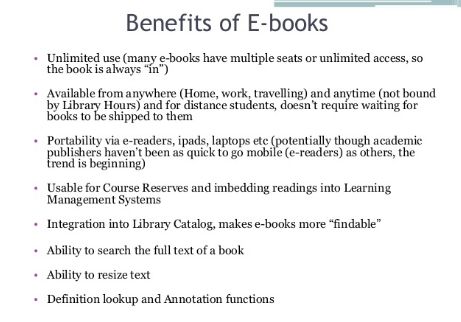Interactive e-books have been instrumental in advancing content strategy by enhancing engagement, improving learning experiences, providing actionable data insights, supporting multimedia integration, ensuring scalability and accessibility, offering marketing opportunities, and enabling agile content updates. By leveraging these capabilities, organizations can create compelling and effective content strategies that resonate with audiences, achieve strategic objectives, and adapt to evolving digital landscapes.

E-books, short for electronic books, are digital publications designed to be read on electronic devices such as computers, tablets, e-readers, and smartphones. They offer numerous benefits over traditional printed books and come in various types, each catering to different preferences and needs.
Interactive e-books have profoundly influenced content strategy by offering a versatile and engaging medium that enhances user interaction, learning experiences, data analytics, and marketing effectiveness.
Benefits and Advantages of E-books
Convenience and Accessibility:
- Portability: Carry a library of books on one device, ideal for travelers and commuters.
- Instant Access: Download instantly from online stores or libraries for immediate reading.
- 24/7 Availability: Access your books anytime, anywhere, with an internet connection or pre-downloaded content.
Customization and Interaction:
- Adjustable Settings: Customize font sizes, background colors, and brightness to suit your reading preferences.
- Interactive Features: Enjoy multimedia content like videos, audio, and interactive quizzes for enhanced engagement and learning.
Cost-effectiveness:
- Lower Costs: E-books are often cheaper than printed books and eliminate shipping expenses.
Environmental Impact:
- Eco-friendly: Reduce paper usage and the environmental impact of printing, shipping, and disposal.
Searchability and Navigation:
- Efficient Navigation: Quickly find specific topics or passages with search functions and easily navigate through chapters, bookmarks, and the table of contents.
Publishing Flexibility:
- Global Reach: Allow self-publishing authors and small publishers to reach global audiences without relying on traditional publishing houses.
Types of E-books:
- PDF E-books Maintain original formatting and layout, making them ideal for textbooks, manuals, and documents requiring consistent presentation.
- EPUB E-books: Versatile format optimized for e-readers and mobile devices, supporting reflowable text for adjustable font sizes and layouts.
- MOBI/AZW E-books: Formats specific to Amazon’s Kindle, supporting features like bookmarks, notes, and syncing across devices.
- Interactive E-books: These should include multimedia elements such as videos, animations, and interactive quizzes, which enhance engagement and learning, particularly for educational content.
- Enhanced E-books Combine text with multimedia and interactive features, including audio narration, embedded videos, and interactive maps, for a richer reading experience.
- Fixed-layout E-books Preserve the exact layout and design of printed books, making them suitable for titles with complex formatting, such as children’s books and graphic novels.
Boost Engagement and Conversations with Interactive Experiences
While e-books have long been a staple of content marketing, static PDFs are losing their appeal. To truly captivate your audience, consider interactive e-books. This article explores the power of interactive e-books and how to leverage them in your content strategy.
The Rise of Interactive Content
Before diving into interactive e-books, let’s define interactive content. As Scott Brinker, founder of Ion (Rock Content’s interactive content platform), explains, content fosters audience participation, going beyond passive consumption. Examples include quizzes, assessments, and calculators.
Here’s why interactive content is a game-changer:
- Increased Engagement: Interactive pages receive 3x more likes and shares (HubSpot).
- Boosted Conversions: Interactive experiences convert leads at a 2x rate (Demand Metric).
- Customer Expectations: 84% of customers expect brands to create engaging, informative experiences (Meaningful Brands Report).
Interactive Content in Action
Interactive content fosters a two-way conversation, allowing you to gather valuable data while guiding users through their buyer’s journey. Here’s how it works:
Imagine you want to assess a user’s content marketing maturity. By creating an interactive quiz, you can uncover their challenges and needs. This data is helpful for the user (providing personalized insights) and your marketing strategy (identifying content gaps and opportunities). Additionally, sales teams can leverage this data to personalize outreach.
Transforming Static E-Books
Interactive e-books breathe new life into static PDFs. They not only deliver content but also encourage user interaction, leading to better information retention. A winning strategy is to offer a few free chapters, piquing user interest and prompting them to unlock the rest by providing their contact information.
Enhancing Your E-Books with Interactive Elements:
- Click-to-Expands: Reveal user profiles or additional resources in lightboxes.
- Sliders or Flows: Showcase testimonials or condense long text for easier digestion.
- Tabbed or Accordion Content: Organize dense information and cater to user preferences.
- Engagement Questions: Collect user data or help them find solutions.
The Benefits of Interactive E-Books
Interactive e-books offer a multitude of advantages over static PDFs:
- Brand Awareness: Create a “wow factor” that encourages content sharing.
- Education: Educate your audience and establish brand authority by showcasing expertise.
- Engagement: Keep users captivated with interactive elements, leading to longer engagement times.
- Content Personalization: Tailor content to user needs, a crucial marketing strategy.
- Lead Generation: Capture user information with gated content, sparking initial interest.
- Nurturing Leads: Use CTAs throughout the e-book to guide users toward the next step.
- Data-Driven Insights: Gain valuable user data to optimize your marketing efforts.
Best Practices for Interactive E-Books
- Repurpose Existing Content: Breathe new life into static e-books by incorporating interactive elements.
- Embrace Testing: There’s no one-size-fits-all approach. Continually test different elements to understand user preferences.
- Set Clear Goals: Define your objectives (engagement, downloads, social shares) and incorporate targeted CTAs throughout the e-book.
- Track Performance: Monitor user behavior and CTA effectiveness to refine your strategy.
Conclusion: The Power of Interactive E-Books
Interactive e-books are an innovative way to engage your audience, collect valuable data, personalize content, and drive conversions. By incorporating them into your content marketing strategy, you position your brand as forward-thinking and dedicated to user needs. Ready to take the next step? Discover Ion, Rock Content’s interactive content platform, and create e-books that propel your marketing goals.






